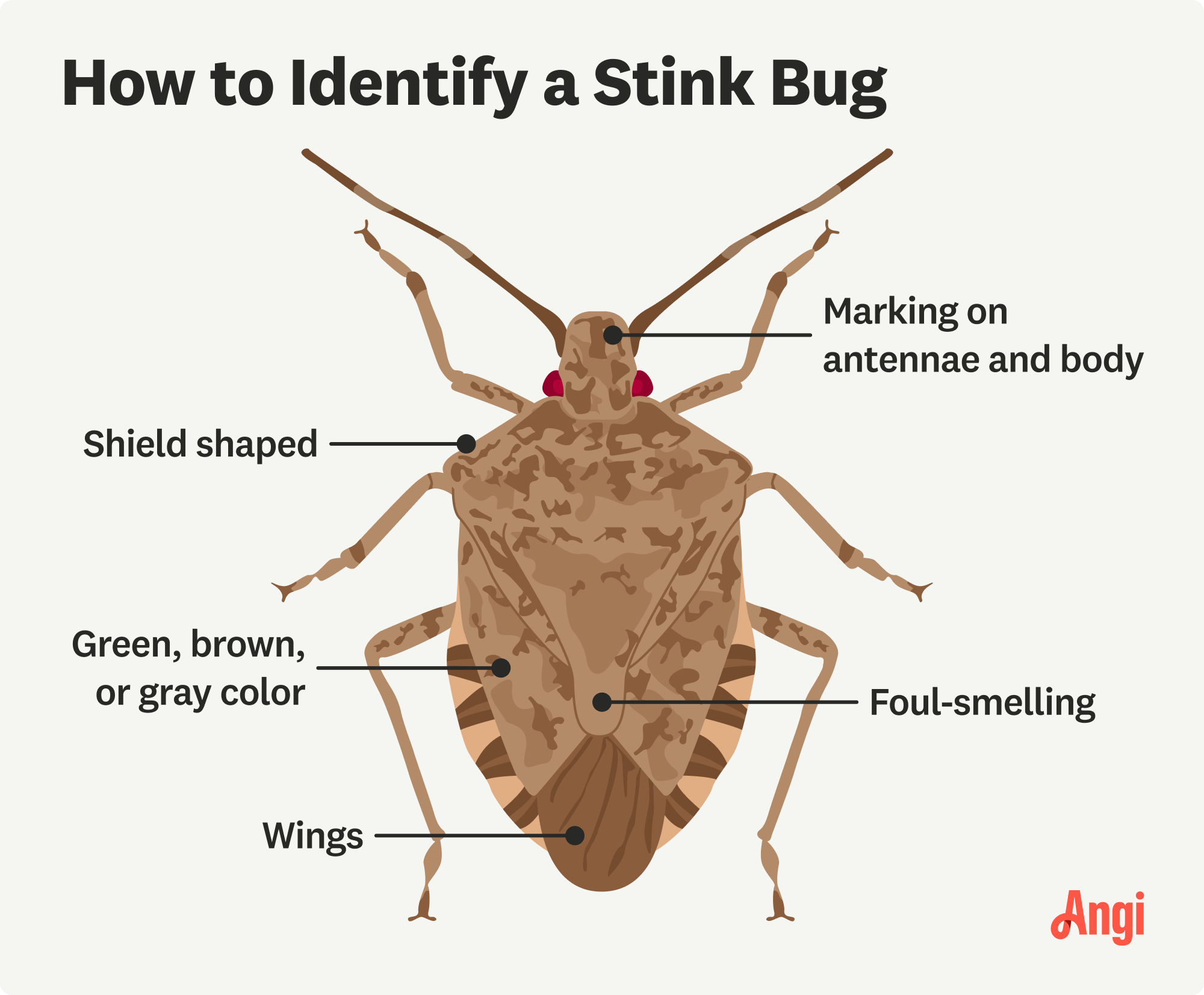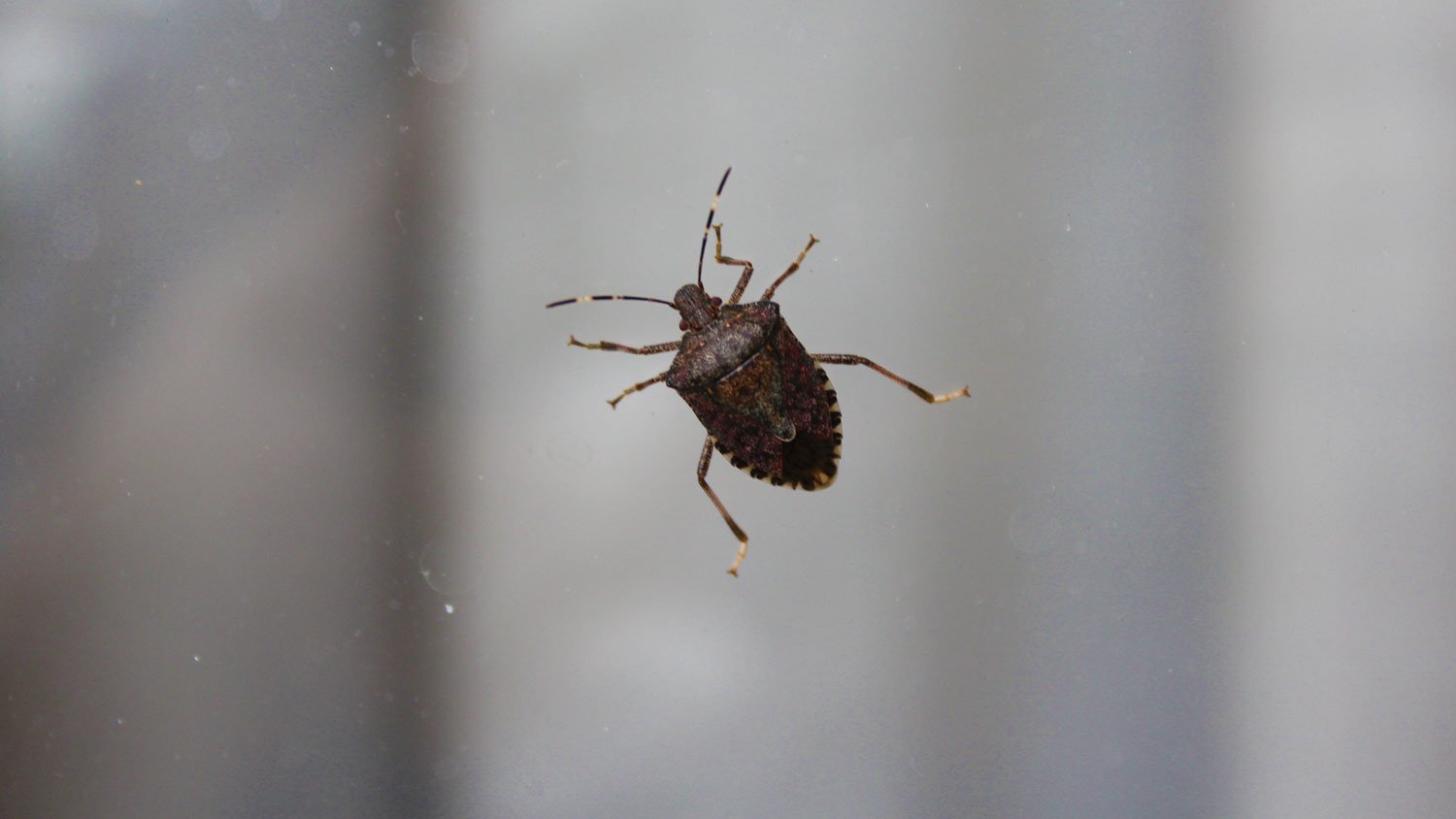
Whether you have bugs, bats, or rodents invading your home, you’ll want to contact an exterminator quickly. Find out how much pest control costs in Columbus, OH.
These sneaky shield-shaped bugs will take shelter inside your home


Stink bugs are an invasive pest that is native to Asia that appeared in the United States in the 1990s.
The Brown Marmorated Stink Bug is the most common species in the United States.
Stink bugs emit a foul-smelling odor when threatened, attracting more of them to your home.
Hire a local exterminator to rid your home of a major stink bug infestation before it worsens.
There are over 5,000 species of stink bugs, and roughly 200 species in the United States. Although these shield-shaped bugs don’t cause structural damage or bite, they are known for their “stinky” odor and ability to damage plants and crops. But where do stink bugs come from, and how are they sneaking into your home?
Let’s dive into where these stinky pests come from, what they eat, and how to get rid of them.

According to the United States Environmental Protection Agency, stink bugs are an invasive pest native to Asia that was first found in the United States in the mid-1990s. The most common stink bug found in the U.S. is the Brown Marmorated Stink Bug, which is found predominantly in the Northeast and Midwest regions.
This species of stink bug feeds on plants, trees, and crops, which can damage them and transmit diseases to vegetation. However, there are predatory types of stink bugs that eat other types of pests, such as the spined soldier bug and the two-spotted stink bug. These varieties help manage aphid, beetle, and caterpillar populations.

Now that you know where stink bugs come from, you are probably curious about how these stealthy insects get into your home. When outdoors, stink bugs tend to live near vegetation and in-ground debris, such as leaf litter and mulch. However, as temperatures drop, they tend to move indoors to avoid the harsh elements of the winter.
There are many ways stink bugs can enter your home, including through cracks and crevices, window and door frames, and air ducts. They can also hitchhike on plants brought into your home. They can crawl and fly, so finding ways to get in isn’t a problem for these pests.
It’s easier to prevent stink bugs from entering your house than evicting them once they are inside. There are a few key steps you can take to keep them at bay:
Seal up entry points: Inspect in and around your home for areas where stink bugs can enter, and then seal them up. Repair things like loose weatherstripping, gaps around doors and windows, and screens that have holes in them.
Clear out clutter: Stink bugs can easily hide and live in cluttered spaces, such as garages, basements, and attics. Get rid of unused items and boxes lying around to prevent them from living in your house.
Move wood piles away from the house: Another way to help prevent stink bugs and other pests from getting inside is to move wood piles further away from your home. This step can put some distance between where they naturally take shelter and your house.
There is a reason they are called “stink” bugs—they emit a foul-smelling odor when they are threatened or disturbed. You should avoid squishing them because they release that odor when they are crushed. However, there are a few DIY tricks to help get rid of these smelly pests:
Make homemade traps: You can create stink bug traps by filling a metal pan with soapy water and placing it in a sunny location to attract them to it.
Mix a natural bug killer: Another way to get rid of stink bugs is to mix up a simple solution of ½ cup of vinegar, ¼ cup of dish soap, and 1 cup of hot water and spray directly onto them.
Try essential oils or neem oil: You can repel stink bugs from your home using certain types of essential oils, such as spearmint, clove, and tea tree. Neem oil can be used as a natural insecticide to deter and kill stink bugs.
Hire an exterminator: Stink bugs can be persistent pests, and it can be hard to get rid of them if an infestation starts. One of the easiest ways to eradicate them is to hire an exterminator near you.
From average costs to expert advice, get all the answers you need to get your job done.

Whether you have bugs, bats, or rodents invading your home, you’ll want to contact an exterminator quickly. Find out how much pest control costs in Columbus, OH.

It’s important to know bed bug treatment costs if you have an infestation. Our guide covers different treatment methods and cost factors to eliminate these pests.

How much does a gnat exterminator cost? The answer depends on the method of treatment and the level of infestation. Find out what plays into your budget.

If you have them, then you most likely want to know how to get rid of snakes for good. Here are tips to get them off your property in a humane manner.

Pest inspection costs depend on the type of inspection, location, and other factors. Learn more about how much pest inspections cost with this guide.

There are many types of mites that may infest your home. Learn how to get rid of mites and tips for preventing them from returning.